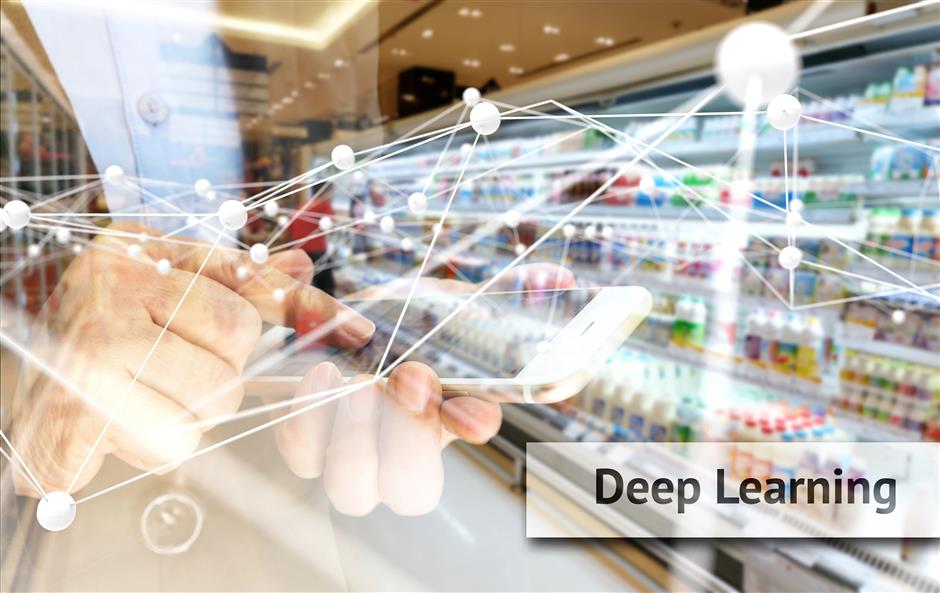The retail industry has been pushed by a wave of business intelligence (BI) over the last decade and progressively it has stepped into the field of Internet commerce dominated by big data.
copyright by www.shine.cn
 With the constant need of peoples’ desire of personalized consumption, the in-depth integration of artificial intelligence (AI) technology and retail becomes an irresistible trend of the new retail industry transformation. AmazonGo has opened to the public, eradicating queues or long lines and become a sensation to the industry. Amazon describes it as “a new kind of store with no checkout required.” However, some people believe that the current AI in retail industry is just a literal replacement of BI (from B to A).
With the constant need of peoples’ desire of personalized consumption, the in-depth integration of artificial intelligence (AI) technology and retail becomes an irresistible trend of the new retail industry transformation. AmazonGo has opened to the public, eradicating queues or long lines and become a sensation to the industry. Amazon describes it as “a new kind of store with no checkout required.” However, some people believe that the current AI in retail industry is just a literal replacement of BI (from B to A).
So what is the real AI that is needed in the retail industry?
On January 26, the second session of the monthly salon event discussing consumption upgrade was held by Eastday.com, art and technology consulting platform Top Tier, its affiliated Consumption Upgrade Research Institute and a new retail consulting company More Than Retail.
Experts from fields of real estate, traditional merchandise business, science and technology, cultural consumption, market research, self-brand probed into technological innovation and in-depth integration.
AI and new retailing, what would the influence be of the combination of these two trendy words on a future shopping experience? Hong Kai, vice CEO of Nielsen China, stated that in the classification of traditional retailing markets, it is impossible to conduct in-depth analysis on consumption capability through consumers’ age, occupation, body size, personality, education, personal preference, working performance and income.
With the constant increase of cost of attracting customers online, an approach to combine online and offline patterns to meet the needs and preference of consumers, has been applied to the construction of the new membership system. For instance, Alibaba’s flagship fresh food store Fresh Hema, a new retail pattern which combined online and offline shopping, and is supported by big data, showed that its area effectiveness is three to five times as much as one of the traditional stores. […]
read more – copyright by www.shine.cn


The retail industry has been pushed by a wave of business intelligence (BI) over the last decade and progressively it has stepped into the field of Internet commerce dominated by big data.
copyright by www.shine.cn
So what is the real AI that is needed in the retail industry?
On January 26, the second session of the monthly salon event discussing consumption upgrade was held by Eastday.com, art and technology consulting platform Top Tier, its affiliated Consumption Upgrade Research Institute and a new retail consulting company More Than Retail.
Experts from fields of real estate, traditional merchandise business, science and technology, cultural consumption, market research, self-brand probed into technological innovation and in-depth integration.
AI and new retailing, what would the influence be of the combination of these two trendy words on a future shopping experience? Hong Kai, vice CEO of Nielsen China, stated that in the classification of traditional retailing markets, it is impossible to conduct in-depth analysis on consumption capability through consumers’ age, occupation, body size, personality, education, personal preference, working performance and income.
With the constant increase of cost of attracting customers online, an approach to combine online and offline patterns to meet the needs and preference of consumers, has been applied to the construction of the new membership system. For instance, Alibaba’s flagship fresh food store Fresh Hema, a new retail pattern which combined online and offline shopping, and is supported by big data, showed that its area effectiveness is three to five times as much as one of the traditional stores. […]
read more – copyright by www.shine.cn
Share this: